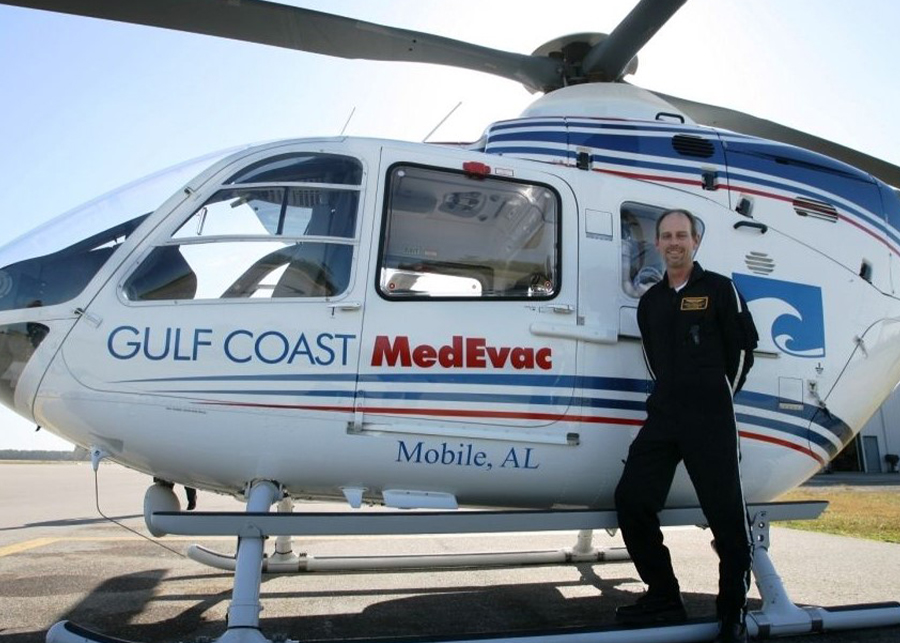Getting a private license
Whether you want to become a helicopter pilot because you are drawn to the excitement of rescue missions or because you believe helicopters will remain a preferred method of transportation, pursuing a helicopter pilot license can be extremely rewarding. Aspiring pilots can embark on this career through private helicopter classes that focus on obtaining a private and commercial helicopter license.
One of the most rewarding careers in aviation is that of a helicopter pilot. However, the process to get a private helicopter license is not cheap. The training may cost as much as $18,000 or more, depending on your skill level and what the training company offers. Getting a private pilot license requires about 40 hours of flight time. This includes 20 hours of dual instruction and 10 hours of solo flight time. Depending on your skills, you may need to do additional flight time or pursue an instrument rating.

In order to earn a private helicopter license, you must first have a Private Pilot (Airplane) Certificate. To earn this license, you must take a written examination and pass a practical flight test. In addition, you must also complete a minimum of 20 hours of ground training. During the training, you should spend approximately one hour of ground time for every two hours of flight time.
After earning a private helicopter pilot license, you can work towards a commercial helicopter license. This license will allow you to fly helicopters and be the pilot in command under Visual Flight Rules. It is a great way to learn more about helicopters and become a professional in the industry.
Getting an instrument rating
If you want to fly helicopters for business or personal use, getting an instrument rating will be a good idea. Not only will you have a higher skill level in aviation, but you’ll also save money on insurance. An instrument rating is also good to have in case of emergencies.
The instrument rating process begins with ground school, where you learn about instrumentation, navigation systems, and air traffic control. It also includes lessons on weather and flight planning, and involves practicing instrument approaches in a flight simulator. After that, you’ll take a computer-based test to demonstrate your proficiency.
An instrument rating will allow you to fly in adverse weather conditions. It will also improve your judgment about adverse weather and give you the ability to fly a helicopter using only instruments. This will improve your overall capability and safety while flying. The instrument rating course is often required by corporate and EMS operators.
An instrument rating can take between nine and twelve months. In most cases, the training is offered at a FAR Part 141 school. There are also instructors at local airports who can provide instruction. In some cases, accelerated courses are available to make the process faster. Getting an instrument rating will cost you anywhere from $25,000 to $30,000.
Before taking an instrument rating test, you must get authorization from an FAA inspector or Designated Pilot Examiner. This authorization can come in the form of a certificate, logbook endorsement, or written statement. Once you’ve passed the test, you can then focus on the flight training and checkride preparation.

Choosing a career path as a helicopter pilot
As a helicopter pilot, you’ll enjoy a challenging, high-paced career. Helicopters can be noisy and crowded, but helicopter pilots find the job exciting and rewarding. They’re also in high demand, and there is a high demand for experienced pilots. To ensure your job security, you should research potential employers and understand their business. A recession or company closure can affect your job security. To protect yourself from this risk, look for a company that has been in business for a long time. And as a pilot, you’ll need to ask whether the company has a proven track record of retaining pilots.
A helicopter pilot can land anywhere and perform a wide range of duties. The job can be highly dynamic, from taking tourists to the Grand Canyon to taking scientists to remote areas. And a helicopter can be used to carry supplies in large quantities. There are even times when it can herd livestock.
In addition to law enforcement and government jobs, helicopter pilots can work in tourism and air photography, aerial photo, agricultural spraying, offshore oil work, and even fire fighting. As a helicopter pilot, you’ll have a diverse set of skills, from performing safety checks to negotiating with air traffic controllers. But before you begin your career as a helicopter pilot, you need to earn your pilot’s license.
While helicopter pilots don’t need to have a college degree, many employers prefer to hire pilots with postsecondary education. Most aviation programs require a variety of math, computer science, and engineering courses. Some programs even include helicopter pilot license requirements.
How to Become a Helicopter Pilot Result
If your passion lies in the exploration of why things work or how they work, then a career in aviation will be right up your alley, with plenty of options to become a pilot. It all starts with earning a private helicopter license, which opens many doors and provides you with a solid foundation upon which you can build your dream career.








